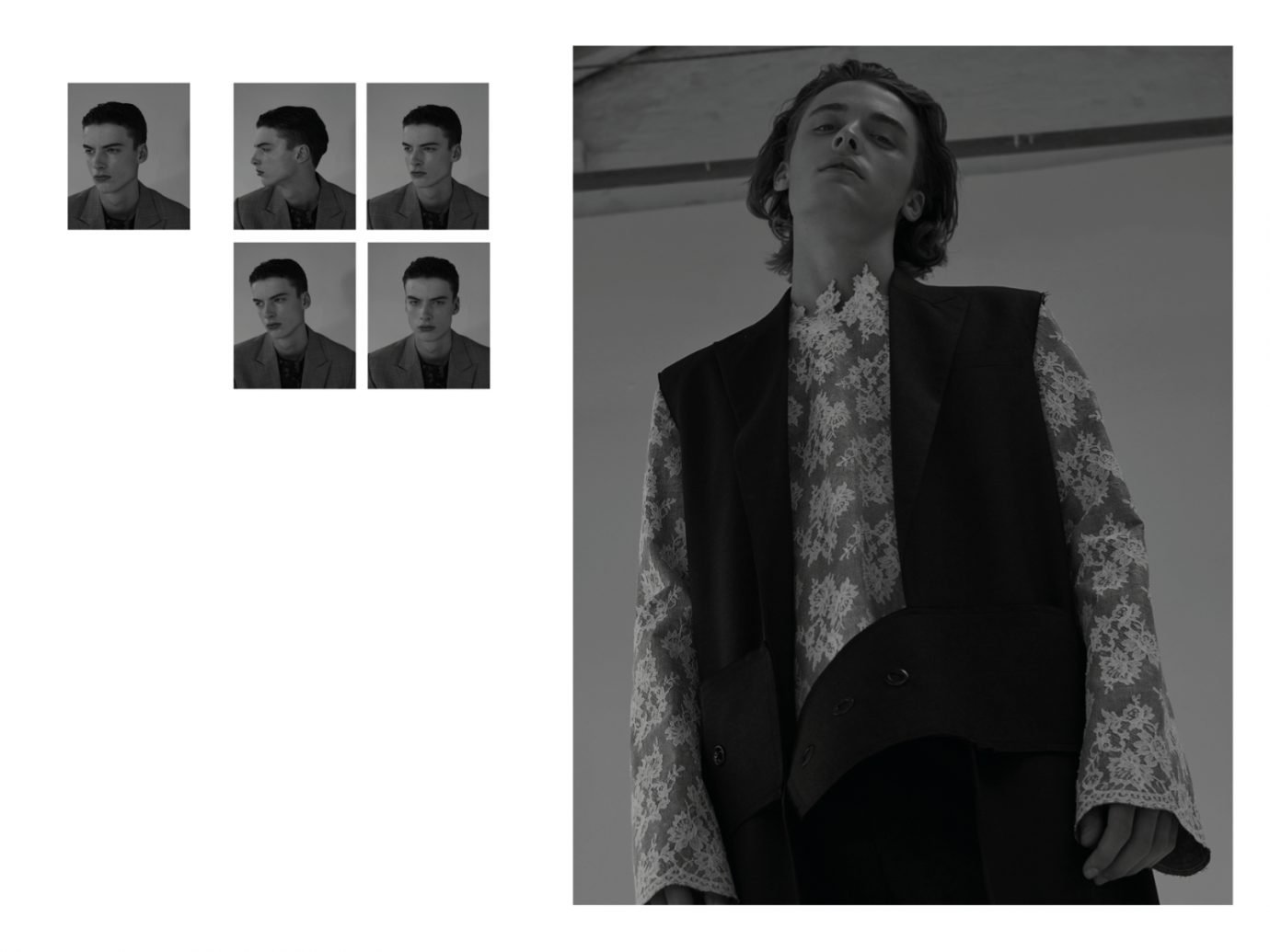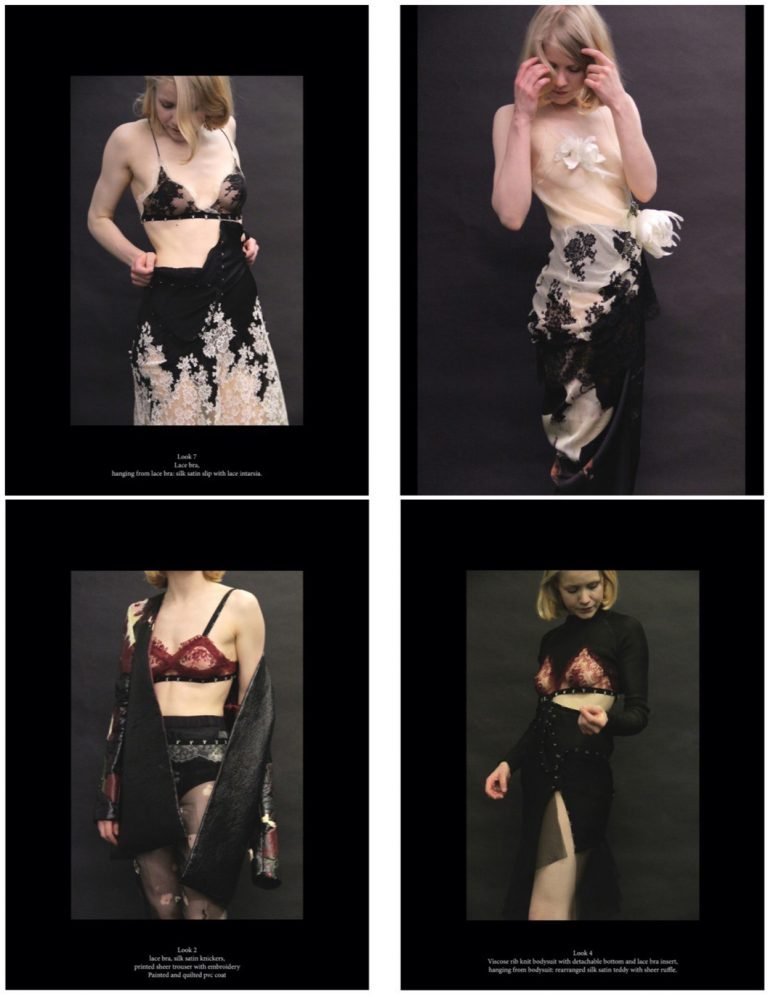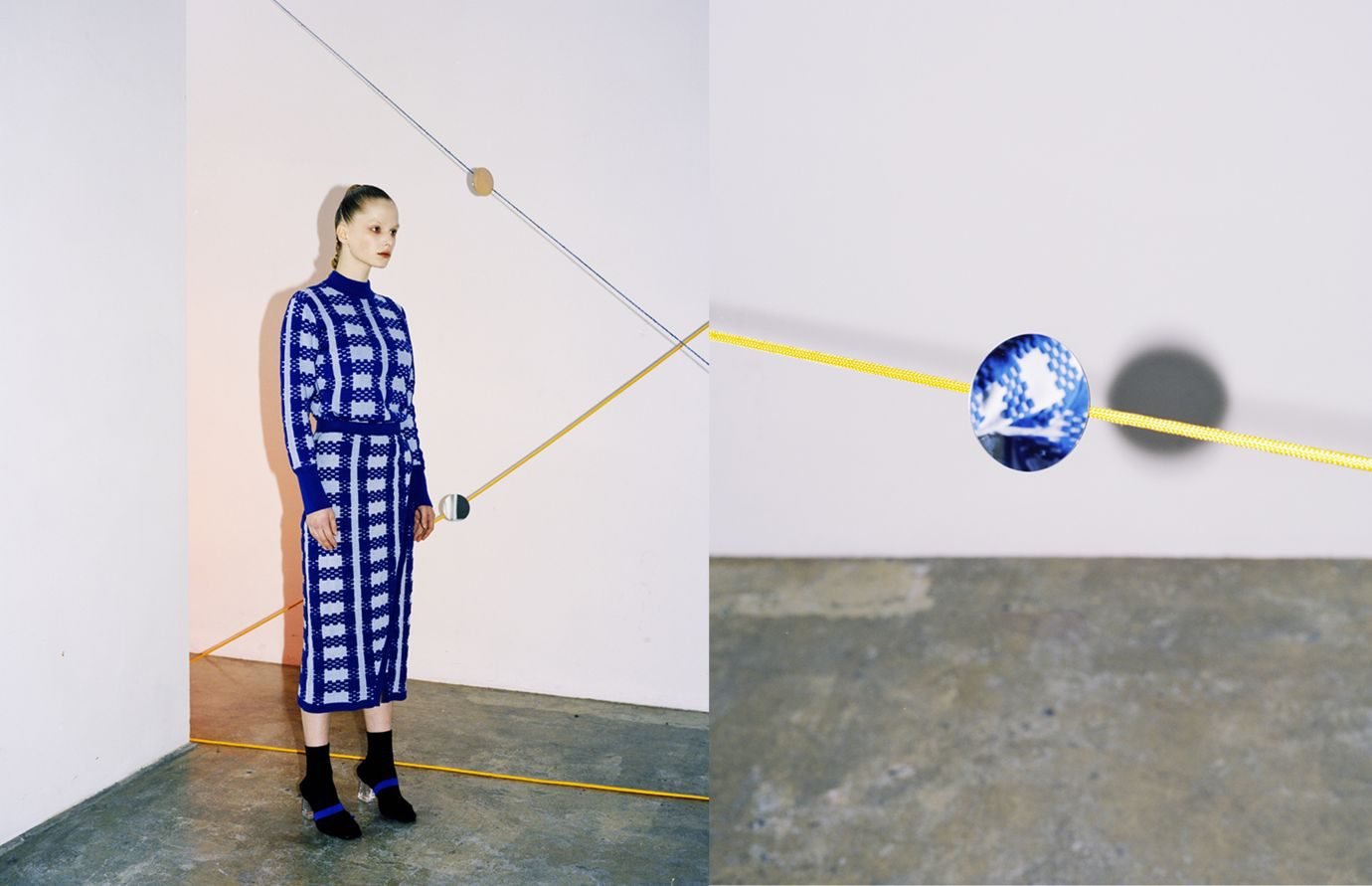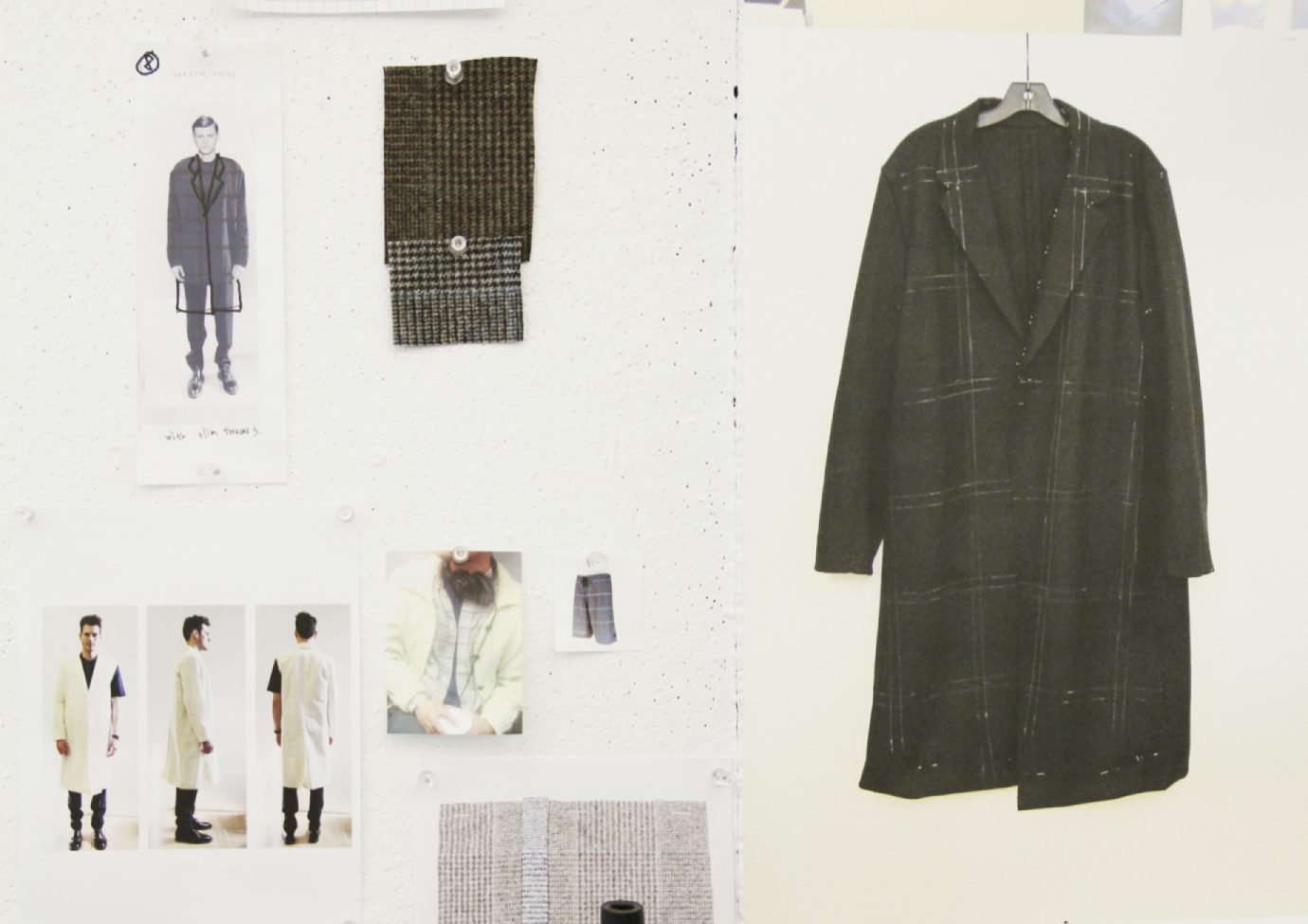Zitong Wang, Chinese designer and graduate of the MA Menswear at London College of Fashion, grew up in Shanghai. She says that her earliest memory of thinking about being a fashion designer came from watching her mother at work. “When I was a young kid, my mom used to work as a print designer for a few overseas clothing brands, and I would very often observe her creating the projects for her clients. In my pastime after school, we would also take my old school uniforms and decorate them together for fun, drawing different colourful prints.”
Zitong Wang: In bloom
The Chinese designer is using distorted images of nature to redefine the codes of masculinity
Wang says that another big influence on the decision to start her fashion education was discovering the work of Martin Margiela in her adolescent years. “I was very drawn to how expressive and conceptual his vision was. I also really liked that his designs weren’t overtly conspicuous – at the time when he was creating, when you would see people on the streets of Europe wearing his clothes, their looks wouldn’t be considered particularly ‘out there’. His clothes were made of familiar fabric textures, and even though they were constructed in a very special way, they could still remain hidden in a crowd.”
“I wanted to create clothes that are more mature and energetic, which is why I decided to move to London and continue my education at London College of Fashion.”
After finishing school, Wang decided to apply for an undergraduate fashion design degree at Donghua University in Shanghai. Looking in retrospect, she says that the course didn’t fulfill her expectations and challenge her enough as a designer: “I wanted to create clothes that are more mature and energetic, which is why I decided to move to London and continue my education at London College of Fashion.”
For her graduate collection at LCF, They Are Blooming, the designer started her research by looking at the series of paintings that the French impressionist painter Claude Monet created in his garden in Giverny, a town in the Normandy region. Wang was very inspired by the soft and relaxed atmosphere expressed in Monet’s paintings and decided to create a comparative visual study between his depictions and the photos she had taken during her visit to the garden last year.
In her process, Wang became very interested in the influence that cataract, an eye condition that affected Monet’s vision, had on his portrayals of nature. To understand his blurred perception, she created a series of images taken while the camera lens was covered with a transparent georgette fabric, which allowed her to simulate the visual effects of the disease. Furthermore, Wang also looked at the work of John Berger, the famous English art critic who in his work described the effects that cataract had on his vision, and interviewed her grandfather who also suffered from this condition.
In order to reflect Monet’s outlook in her clothes, Zitong Wang focused on using soft and transparent fabrics, such as crepe wool, silk georgette and organza. Wang also decided to double-layer the materials to better express the hues used by the artist, with the colours of the garments laid out through the transparent fabric on the top layer. The collection is also referencing the menswear codes from the 1890s, the period when Monet was creating his work and style of dress developed from traditional and constraining suits towards a more comfortable and relaxed silhouette.
“Flowers are predominantly used to express femininity and as a symbol of the woman’s body, but for me, they are actually very masculine. I see them as an expression of romance and sexual energy, and that’s why they became such an important element of my vision for menswear.”
The romanticism of the clothes has been heightened by the addition of floral elements. Wang not only used lace and developed her own prints but also created decorative silk corsages and elaborate hats inspired by the shapes of the blooming flowers from the Giverny garden. “Flowers are predominantly used to express femininity and as a symbol of the woman’s body, but for me, they are actually very masculine. I see them as an expression of romance and sexual energy, and that’s why they became such an important element of my vision for menswear,” says Wang.
“As young creators, we do not have enough funds or a team that can execute our ideas, so we have to know how to do it ourselves, especially if we want to start our own brands.”
While looking back at her time at LCF, Zitong Wang says that in order to get the most out of a fashion course, it’s crucial to put a lot of focus on developing your technical skills. “Although I don’t think that having in-depth technical knowledge is essential for having great concepts as a designer, I believe that it’s important for fashion students to use the school’s facilities to the fullest and master the craft and techniques as much as possible. As young creators, we do not have enough funds or a team that can execute our ideas, so we have to know how to do it ourselves, especially if we want to start our own brands. If your product fails the test and isn’t made to the standards of the industry, then how can the brand survive?”


































